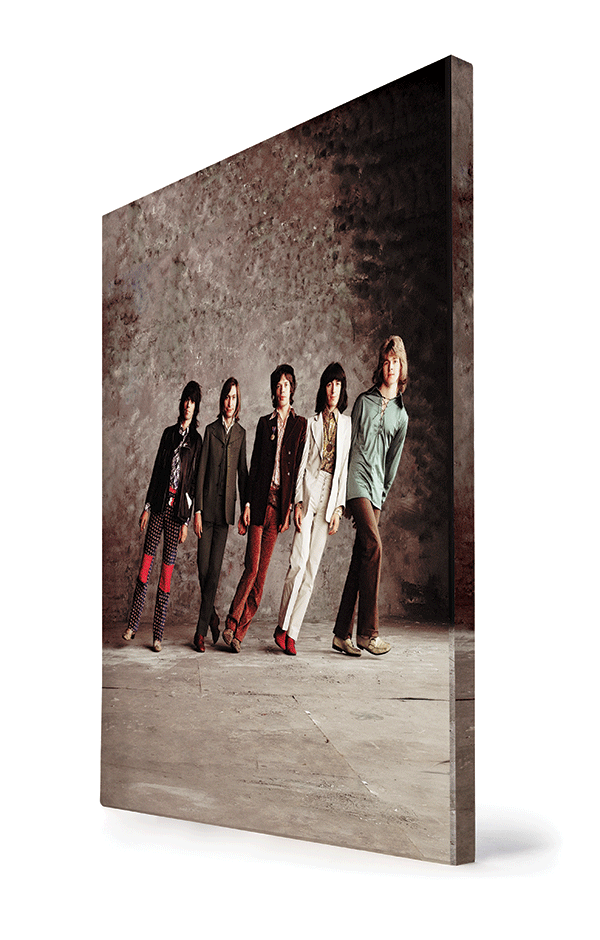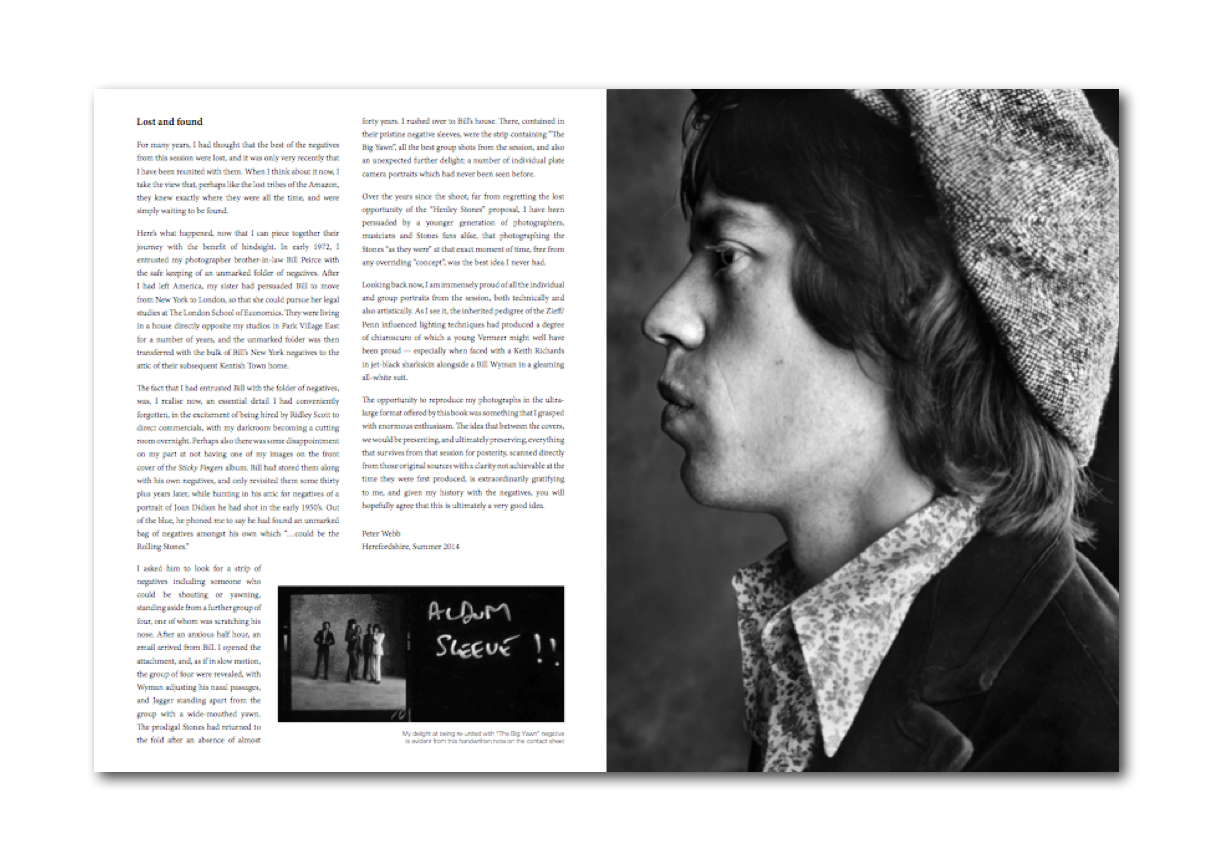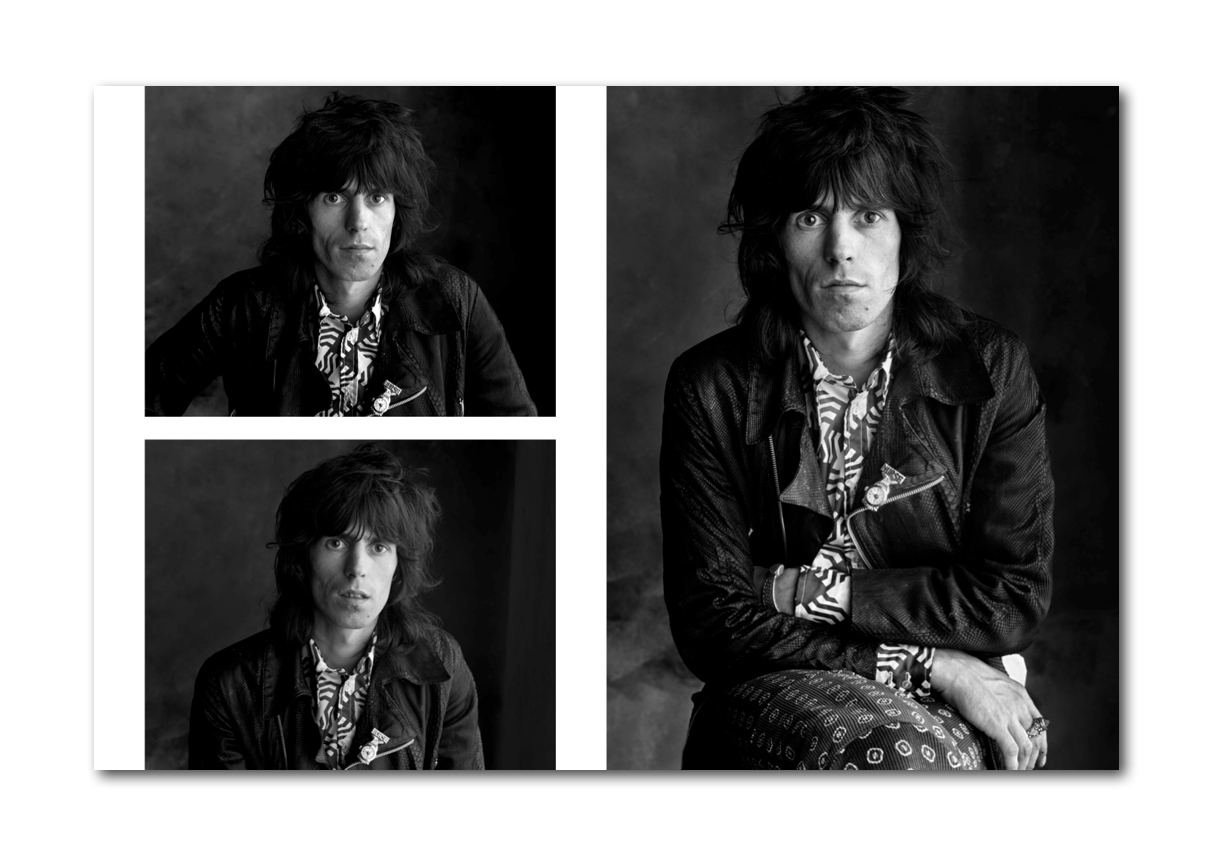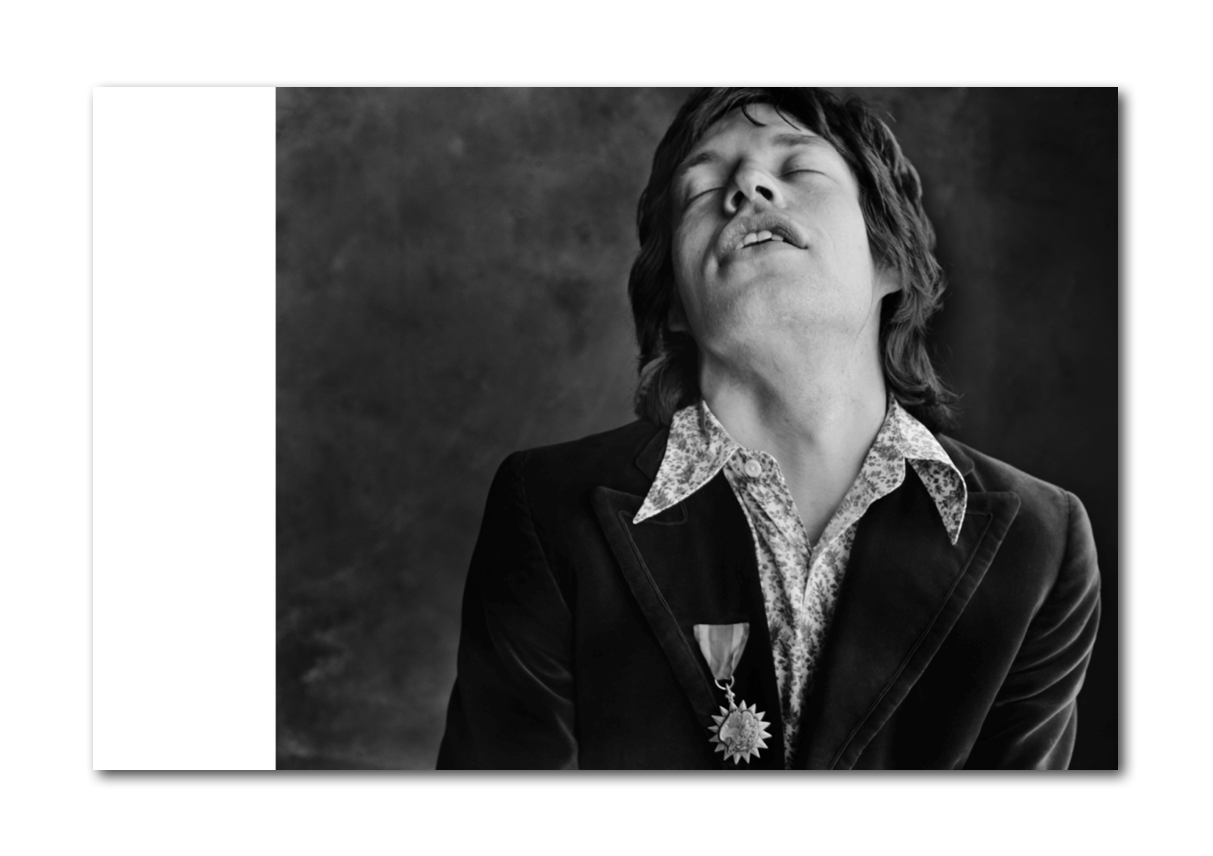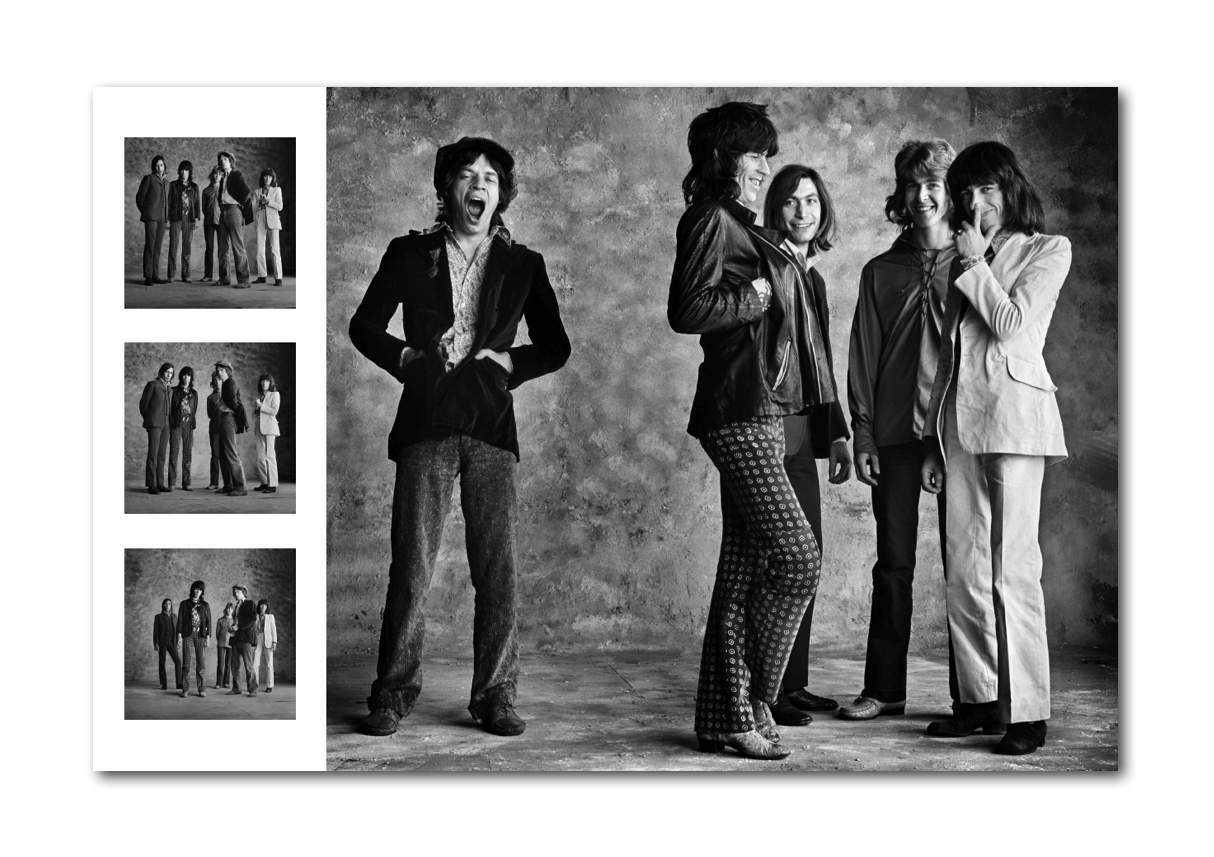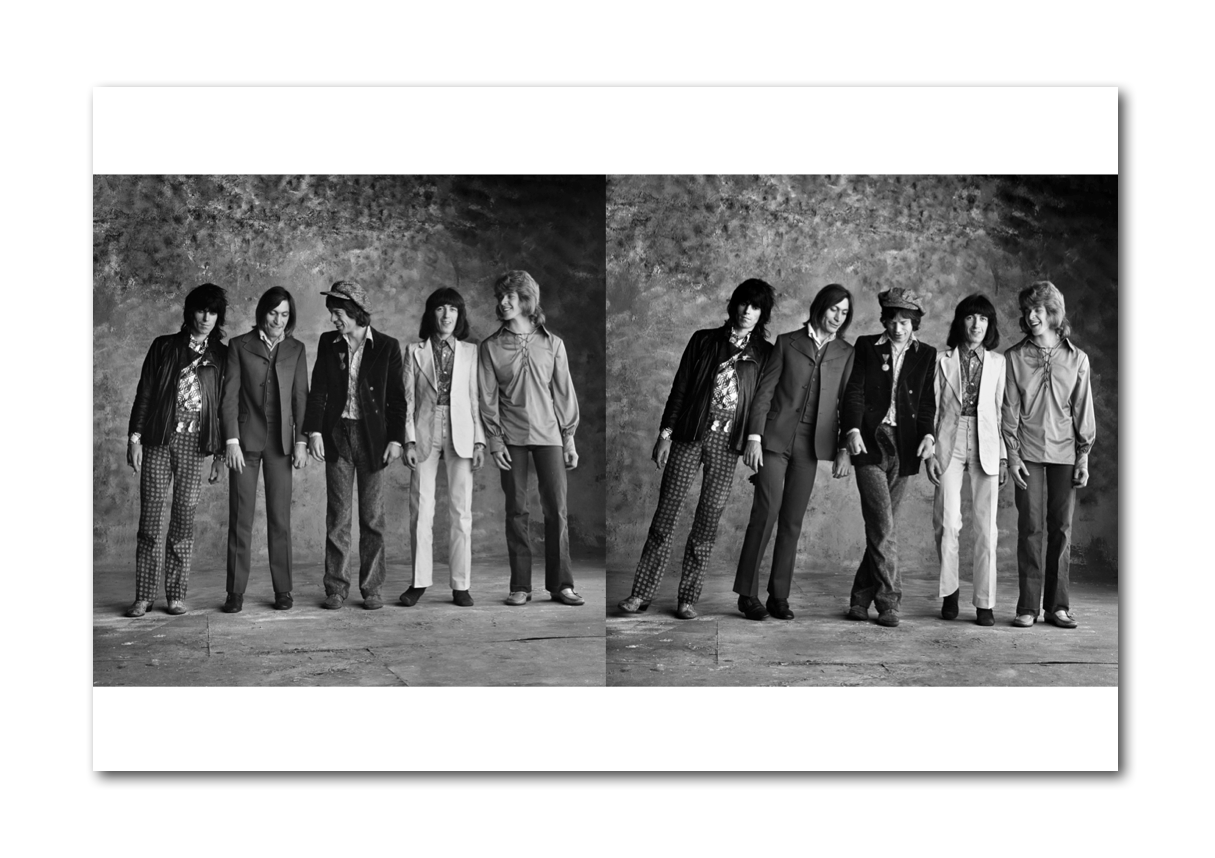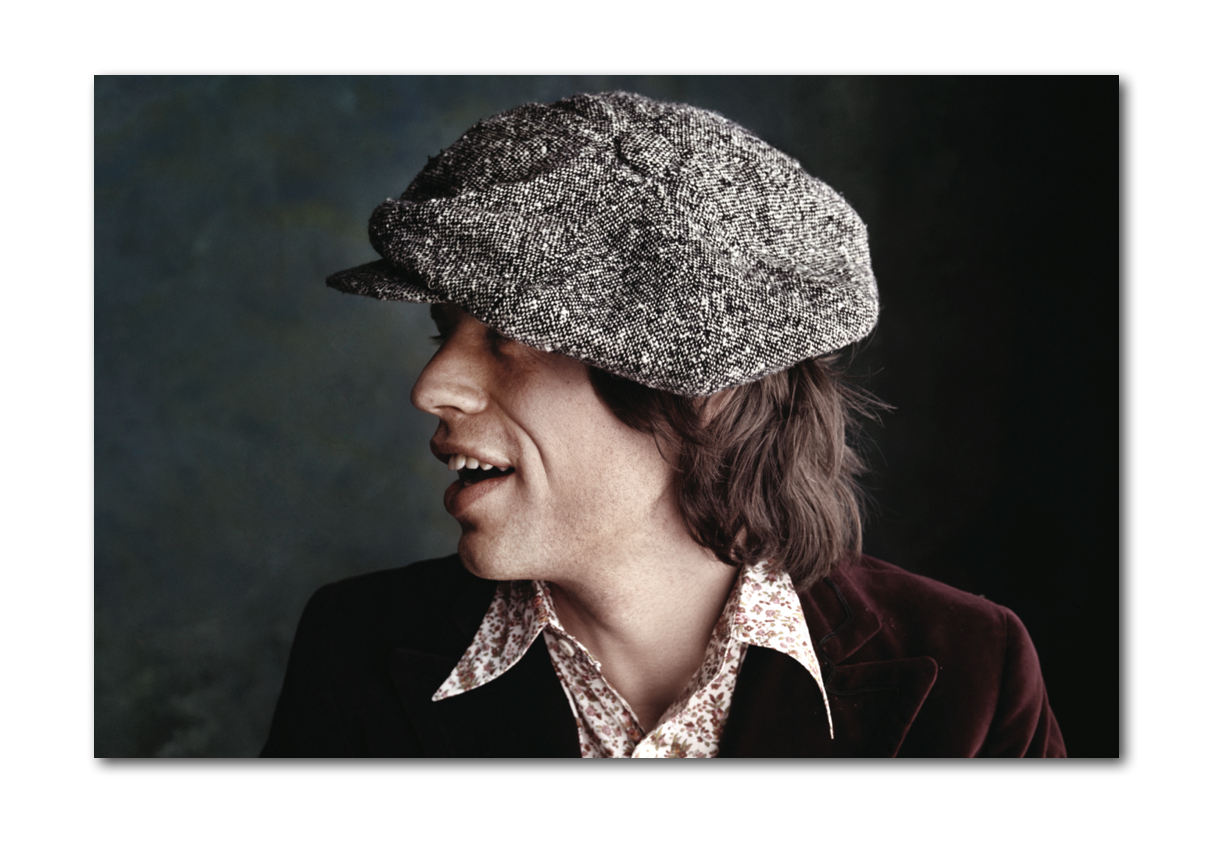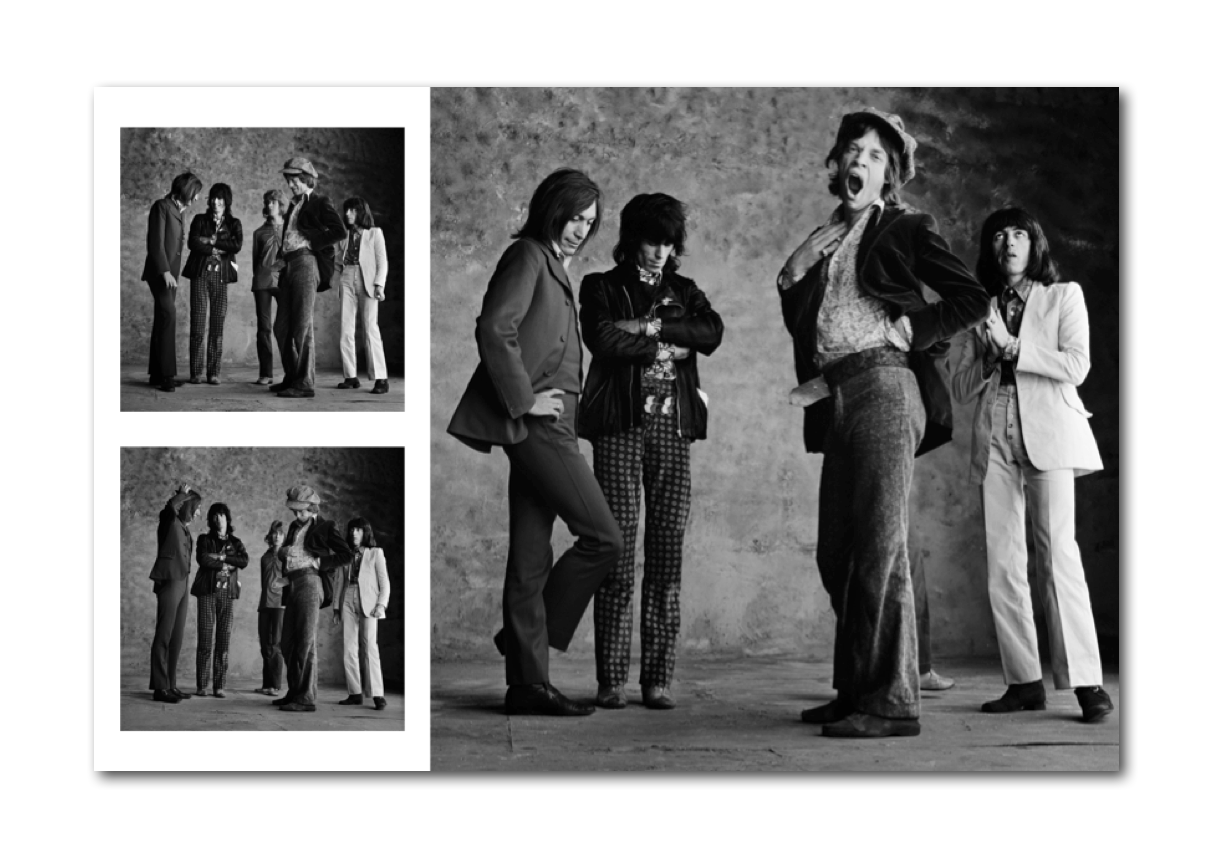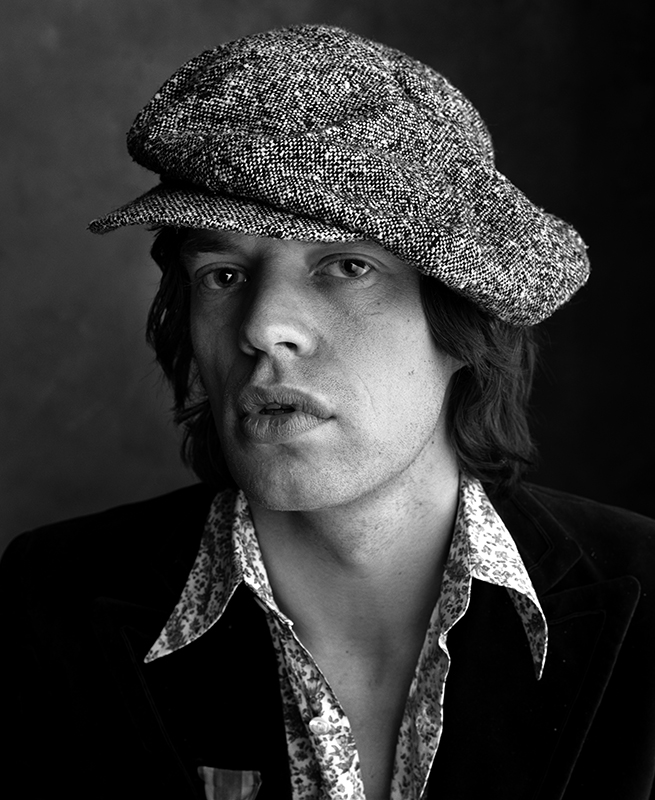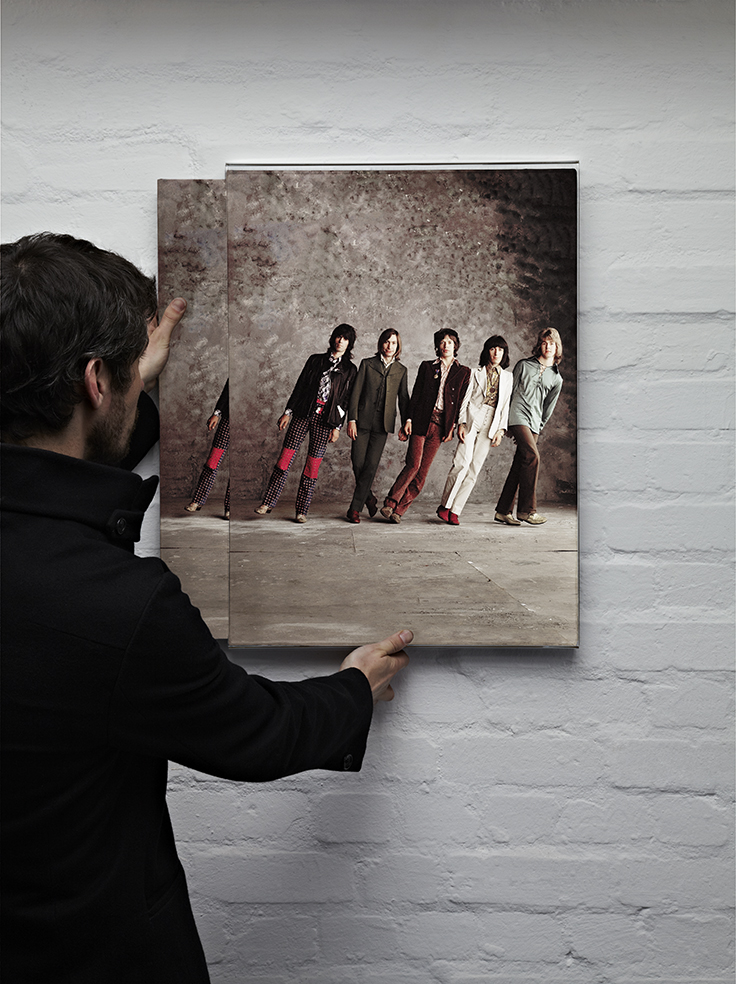Sticky Fingers: The Lost Session. The limited edition book from Ormond Yard Press.
Ormond Yard Press: Bringing You The Bigger Picture.
Sticky Fingers: The Lost Session – photographs by Peter Webb, the third book from our publishing arm, Ormond Yard Press, features the complete surviving archive of black and white and colour photographs from Peter Webb’s 1971 session with the Rolling Stones.
As with all Ormond Yard Press volumes, it is a book on a spectacular scale: a hardcover volume housed in its own printed slipcase and measuring 24 inches high x 18 inches wide (60x45cm) when closed, 24 x 36 inches (60 x 90cm) when open, with 96 pages of photographs. The physical scale may be large, but the edition size is reassuringly small – just 500 individually signed and numbered copies are available to collectors worldwide.
Sticky Fingers is sold out
Sorry – copies of Sticky Fingers: The Lost Session are all gone.
Why should you buy this book ?
Sticky Fingers: The Lost Session – Photographs by Peter Webb is a book on a spectacular scale: an ultra large format hardcover which measures 24 inches high x 18 inches wide (60x45cm) when closed. When the book is open, a double page spread measures 24 inches high by 36 inches wide (60cm x 90cm). Sticky Fingers: The Lost Session includes approximately 100 photographs over its 96 pages, and contains Peter Webb’s entire surviving archive from this key 1971 session – with the majority of photographs previously unpublished.
This book defies the normal ‘coffee table’ convention. Much larger than a traditional coffee table volume, it is slim and elegant at the same time. Sticky Fingers: The Lost Session is housed in a beautiful custom slipcase which reproduces the front and back book cover art. All our publications seek to redefine the book as more than just a book – and as a piece of art in its own right. With this in mind, the cover of the book and slipcase have been deliberately left free of text so that nothing detracts from the power of the images.
Why is this book important? Because something revelatory happens when a photograph is presented in a very large format like this. Hidden details come to light, and the power and impact of the image are magnified exponentially. Unless you go to a gallery and see a large format print on the wall, you can’t experience this. Imagine an entire art gallery exhibition that you get to take home and keep forever. That’s where we come in. Our publishing arm, Ormond Yard Press, was established to bring to life a carefully curated series of spectacular large format limited edition photography books.
Liking the sound of it so far?
Sample pages from Sticky Fingers: The Lost Session – Photographs by Peter Webb
Take a look at some of the double page spreads from Sticky Fingers: the Lost Session in the slideshow. In the book each of these spreads measures 24 x 36 inches (60 x 90cm.)
The content of the book
The story behind Peter Webb’s Sticky Fingers archive is the stuff of legend, and Peter tells it in full in the introduction section of the book, which includes a 5,000 word essay from Peter, and some of his original sketches. Incredibly, the best of Peter’s Sticky Fingers negatives and transparencies were thought lost for over three decades, and he has only been re-united with the collection in recent years.
The vast majority of the work in the archive is still unpublished. Peter estimates that close to two thirds of the Sticky Fingers collection has never seen the light of day. We have been through the complete surviving archive with Peter, and can vouch for the fact that it is a spectacular body of work: a compelling and coherent collection of group and solo portraits in both black & white and colour, shot against the purpose-built backdrop constructed by Peter at his north London Studio.
The book contains approximately 100 photographs over its 96 pages, the majority previously unpublished. The opportunity to present images across double page spreads reveals incredible levels of detail never previously presented in book format.
The choice of front and back cover image is, as always, very important. Peter Webb’s classic image ‘Falling Stones’ will appear on the front cover of the book and slipcase. This colour photograph from the Sticky Fingers session was selected by Q Magazine as one of the top 100 rock and roll photographs of all time, and is very well known to Stones fans. It is thoroughly deserving of its place on the front cover of the book and slipcase. With a colour photograph on the front, it is important for continuity that the back cover of the book and slipcase is also a colour photograph. As a contrast to ‘Falling Stones’, Peter has selected a previously unpublished colour photograph, which he calls ‘Smokin’ Stones’, to appear on the back cover. If you look carefully at ‘Smokin’ Stones’ you will see Bill engaged in an incredible feat of physical dexterity.
Sticky Fingers: The Lost Session will have generous dimensions of 24 × 18 inches (45x60cm) when closed, a spread size measuring 24 × 36 inches (60 x 90 cm) when open, and contains 96 pages of photographs and text. The book is housed in a handsome printed slipcase, and is produced in a strictly limited, signed and numbered worldwide edition of 500 examples.
Facts and figures
This ultra-large-format book measures a staggering 18 x 24 inches (45 x 60cm) when closed, and 36 x 24 inches (90 x 60cm) when open.
Sticky Fingers: The Lost Session has 96 large format pages, with approximately 100 stunning black and white and colour photographs, reproduced in sizes up to 24×36 inches (60x90cm), together with an introductory essay by Peter Webb, and is limited to 500 individually numbered copies worldwide, each one signed by Peter Webb.
Sticky Fingers: The Lost Session is housed in a custom protective slipcase, with front and back cover artwork showing two colour portraits of The Stones. An optional acrylic slide-in slide-out wall unit allows you to display Sticky Fingers: The Lost Session on your wall.
Ormond Yard Press: Bringing You The Bigger Picture
The story behind the book
Sticky Fingers needs no introduction to Rolling Stones fans. Released on 23 April 1971, the album was the third in the run of four studio albums between 1968 and 1972 (Beggars Banquet, Let It Bleed, Sticky Fingers and Exile on Main Street) which many, me included, believe represent the Stones at their creative peak. Instantly recognisable for its’ Andy Warhol cover, early vinyl pressings of the album included a separate 12×12 inch pull-out featuring an uncredited black and white studio portrait of the band. The man behind the camera that day in 1971 was, as owners of this book will of course know, British photographer Peter Webb, and for obvious reasons given Mick Jagger’s wide-mouth yawn, Peter christened that important photograph “The Big Yawn”. It is one of his two best known photographs of the band, the other being “Falling Stones”, a colour photograph from the same session which appears on the front cover of this book.
I ran into Peter Webb at a charity auction at Abbey Road Studios in 2011, where he had kindly donated two very large versions of “The Big Yawn” and “Falling Stones”. We were just preparing to launch our publishing imprint Ormond Yard Press, and as soon as I saw the exquisite detail in the two prints Peter had donated to the auction, I knew they were just the kind of thing that could translate perfectly into one of our ultra-large-format books.
When Peter explained how he had lost the negatives, and then had been unexpectedly reunited with them after so long, I became even more interested, particularly as so many of the session photographs had never been published before. The opportunity to present all the surviving material from that session in this book was one that I relished. This volume of largely unpublished photographs of the Rolling Stones goes to the very core of what Ormond Yard Press is all about: focusing on a key session in the history of contemporary popular culture, by a photographer operating at the peak of his powers, and featuring a group of subjects at the peak of theirs. I felt that here was a story worth telling between the covers of one of our beautiful large format limited edition books: how a young British university graduate travelled to the USA, assisted the legendary Howard Zieff, became a major advertising photographer, and ended up shooting the Stones in 1971. To top it all, his negatives go missing soon after the shoot, and out of nowhere, they are discovered again after almost 40 years. It might be a photographer’s nightmare, but it is any publisher’s dream.
It struck me while working on the book that in observing the finished photographs, for this or any other shoot for that matter, you rarely get the chance to see the wider scene beyond the camera. Given the time Peter spent on constructing the set, I wanted to try and get across a sense of that wider scene in his studio, but without contemporary photographs, that was going to be difficult. However, once I realised that Peter has been a passionate artist since childhood, and a very good one at that, it seemed obvious that we should put those skills to good use in the book. And so I am particularly pleased that he has created some new colour sketches for us to illustrate the introduction. Notably, he has created a sketch showing how the Stones fitted in to the studio set, in front of the painted backdrop and next to the “walk-in” lighting bank. In an early draft of this sketch, in pencil, Peter showed the Stones as stick men, but in the finished version included in the book, he has clothed them, so they are as instantly recognisable as they are in his photographs.
Guy White
Publisher, Ormond Yard Press
Hang your book on your wall
Make no mistake, this is a big book, and we wanted to give you some different display options. Of course you can put it on your coffee table or (big) bookshelf, but we felt it deserved something a bit special. With each of our books, we took a conscious decision to keep the covers free of text, so that nothing would detract from the power of the chosen front and back cover images. That notion gave rise to the idea of this display unit – because it means you can, should you choose to, display your book just like a piece of art on the wall.
Constructed from 5mm clear acrylic, this is a solid, simple and practical way to display your book on your wall in its slipcase. It measures 18.5 inches (w) x 25 inches (h) x 1.5 inches (d). That’s approximately 47cm x 64cm x 4cm. It has curved edges, and a split baton hanging system on the reverse. Acrylic feet at the bottom ensures that it hangs parallel to the wall. It is a nice, elegant, simple, solid piece of work.
It is open sided on the left and right, allowing you to slide your book (and please read ‘book’ as ‘book and slipcase’ here) in and out whenever you want to look at the contents. You also have the flexibility to show the front or the back of the book and flip it over if you feel like a change of view.
More about Peter Webb’s Sticky Fingers session
Here’s an abbreviated extract from Peter’s introduction to the book:
I was introduced to the Rolling Stones by Chariots of Fire producer David Puttnam, in his previous incarnation as a photographer’s agent in the early 1970’s. David had seen my individual plate camera portraits of “faces from around the world” (in reality cast off the streets of Camden Town) in a massive national press campaign for Olivetti.
Puttnam explained to me that the band were “looking to do some shots” for a forthcoming album, and that I should set up a meeting at their office in town. I duly appeared at the Stones’ office, and was ushered in to meet Mick Jagger – a daunting enough milestone for a youngish photographer.
Up to that point, the sum total of my experience as a “rock photographer” stretched from a pre-Wings Denny Laine portrait to that of a youthful Joe Cocker, and culminated in the unequal struggle of framing a five man Procul Harum on an eight foot roll of no-seam studio background paper.
So I did what any young photographer of limited celebrity experience would do and panicked. I searched rapidly around for a suitably impressive concept I thought would showcase the type of high-budget advertising job I was usually hired for.
And so my idea for the session was based around the type of advertising work I was into at the time, as in the Magritte style “Surrealist Art Gallery” I had recently shot as a studio constructed interior. I envisaged the band dressed in Victorian boating attire, posed with oars primed in a beautiful wooden rowing boat. However, the boat would not be on any river. It would be presented in a “Victorian photography studio”, with an elegantly painted backdrop showing a period view of Henley-on-Thames. This whole concept was bizarrely conceived, and most probably as poorly presented.
As a point of reference for the band, I had not even brought an artist’s impression of the proposed scene. Instead, I produced an etching-type drawing of mine which had sparked the idea, picturing a young woman at the controls of an early flying machine in a Victorian photographic studio.
Alarmingly for me, but not at all surprising given the circumstances, during the entire course of my presentation, Jagger produced a series of wide-mouthed yawns, and suggested I pitch my ideas to Charlie Watts in the next door office, and who “was into art”. I was duly ushered in to meet Watts, whose muted response made Jagger’s seem wholly enthusiastic in comparison. Now with hindsight, I can see that Mick’s suggestion I “pitch it to Charlie” was not necessarily the abrupt dismissal I took it for, but perhaps more a constructive suggestion to meet someone who might have been better equipped to interpret my poorly explained concept.
So how did Peter pull it off, and photograph the Stones in his Regents Park studio?
He reveals all in the 5,000 word essay that introduces the book!
Testimonials
This book just blows me away. Peter’s intro is a great read, and the detail in the repro is just incredible. Nice job!
Questions?
If you have any questions at all about Sticky Fingers: The Lost Session please just ask – we are here to help.

